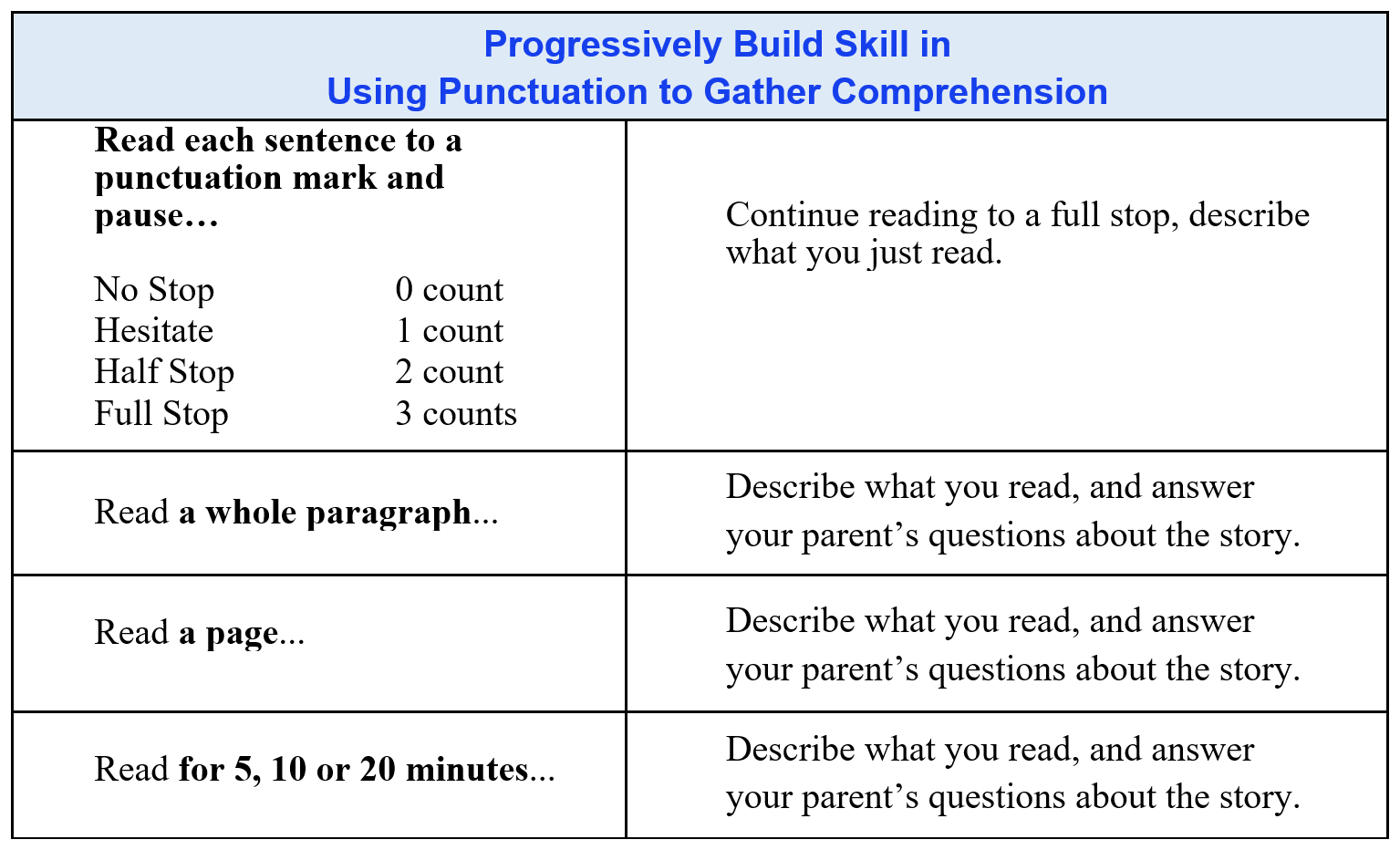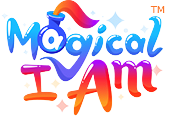Punctuation Mastery 1,2,3


When we use the word “comprehend,” we mean to picture (conceptualize) or grasp (understand or feel through whatever senses are stimulated) the meaning of a word or group of words. Comprehension of words comes from more than an understanding of what the word means. Comprehension also comes from the context in which the words are used. The context is produced by punctuation. We are not concerned here with emphasis or voice tones while reading. This will develop and become more natural as confidence in the decoding process improves.
When a dyslexic is given too much time to sound out a word phonetically or to guess its meaning, they tend to lose their understanding of what they are doing. As a result of this loss, they lose their ability to read and comprehend.
Step 1: Go to The Spot – Align your Mind’s Eye on The Spot, take a breath and continue to read.
Step 2: Pause and Count – Learn to pause at each punctuation mark and count... no more run-on sentence reading. Each kind of punctuation mark has its own count – some punctuation marks require no pausing, others require a count of 1, 2, or 3. When you pause for punctuation, take time to feel, picture, capture the meaning of what you just read.
Step 3: Read to a Full Stop – now tell your parent what you know (feel, picture, experience) about what you have just read
When the reader pauses for a punctuation mark, the reader slows down the amount of information coming into their mind. At this point the reader can take time to experience/picture with all their senses what they have just read. This is how the reader builds comprehension.
To know what count to give to each punctuation mark, look at the chart below.

Punctuation Determines the Meaning of a Sentence:
Read the following lines [1] and picture what you read.
John Morley was not a thief. Like his father, he never stole anything. But money he loved. His daughter, living in a seaside cottage, was his chief joy. Morley said he never stole. But twice he said it was Langley who pinched the crown jewels.
Now read this new version of the same text with punctuation marks positioned in different places. Do you get the same picture reading this version?
John, Morley was not a thief like his father. He never stole anything but money. He loved his daughter. Living in a seaside cottage was his chief joy. Morley said he never stole but twice. He said it was Langley who pinched the crown jewels.
In the John Morley example, changing the punctuation signs in the second paragraph changed the attributes, ownership and action of the words being read. The meaning of a line of text is determined by the rhythm that punctuation marks give to the text. If you want to know what an author intended to say, you must learn to pause at each punctuation mark.
The 3 Steps of the punctuation technique are to be done, step-by-step, with intent and purpose. When this technique is mastered at a conscious level, the dyslexic realizes vast improvement in their overall reading comprehension. Then, they can progressively gravitate toward automatically reading with comprehension.
When Your Reader Does Not Recognize a Word:
If your young reader is "derailed" by meeting a word that they are unable to recognize within 2 counts of viewing it, prompt the reader to immediately:
Step 1: Go to The Spot; Align your Mind’s Eye on the Spot, and take a breath.
Step 2: Use the Easy Written Vocabulary Builder to understand the word.
Step 3: Continue to read to the next punctuation mark, pause for the count of it, and gather the meaning of what they have just read.
Avoid Reading Wrecks, Pause for Punctuation
When you ignore punctuation pause points, the words begin to bang into one another, usually resulting in a reading wreck. The result of a reading wreck is little or no comprehension while reading.
The reading wreck, caused by running together meaningless words, usually triggers a loss of the reader’s brain integration (and therefore a loss of optimal brain function). As confusion and stress build, the dyslexic's Mind's Eye moves around to various positions of perception in an attempt to find meaning of the text. Ultimately if the stress and discomfort become great and are not relieved, the reader’s attention turns to something that they can comprehend, or to a behavior that relieves their distress and provides them with an escape from their task.
Progressively, with practice, your reader will automatically stop for punctuation and gather comprehension of the story they are reading. The chart below suggests how long to read to build comprehension. Avoid long sessions - keep sessions short enough to be productive – the more success, the more fun reading becomes.

Learn to Read, so you can Read to Learn.™
[1] Olive S Niles, Reading Skills for Young Adults. Scott Foreman & Co, Glenview, IL: 1976, p.93
